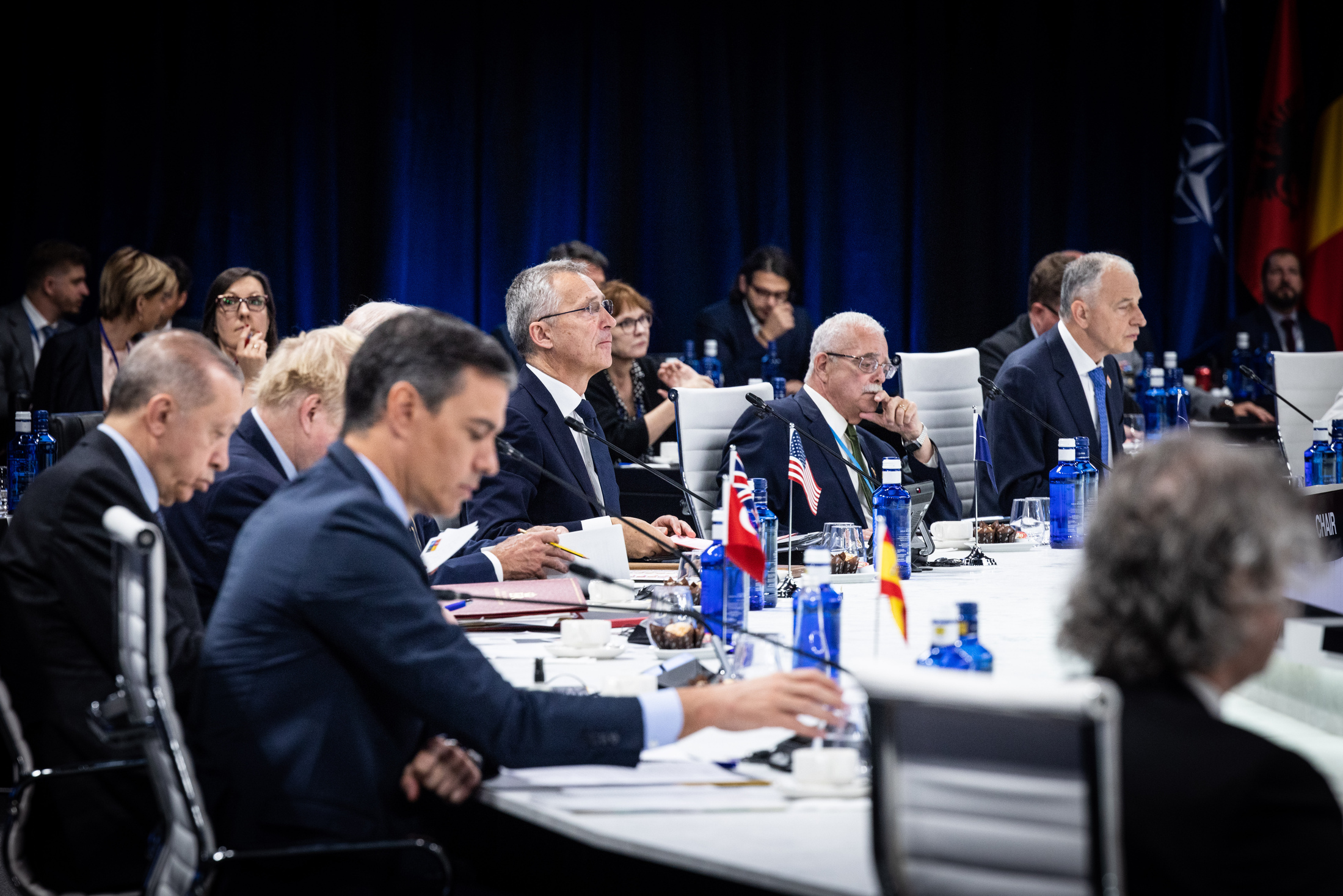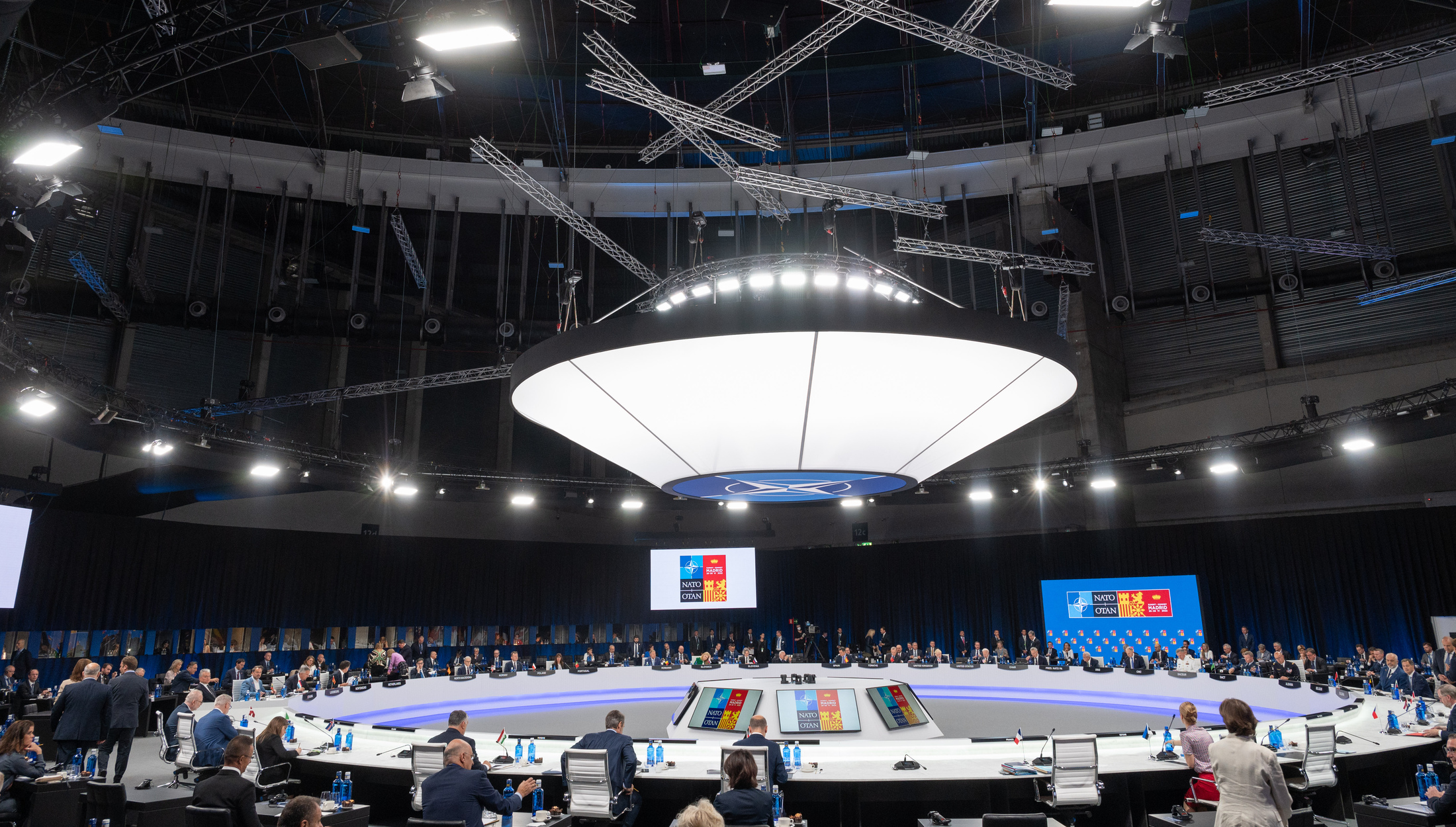Since the Russian invasion of Ukraine in February 2022, NATO has once again become a major player on the world stage. If in fact until recently it had been described by commentators as an organisation in deep crisis, even addressed by French President Emmanuel Macron as ‘brain-dead’, it has emerged strengthened since the Russian “special operation”.
This was confirmed by the summit held in Madrid at the end of June 2022, which confirmed the ‘health’ of the Atlantic Pact. In the Spanish capital, the green light was given for the entry of Sweden and Finland, the number of personnel in Europe was expanded and a ten-year strategy was established. Indeed, the “strategic concept“ approved in the final joint declaration sets out the course of action according to which NATO will pursue its three core tasks over the next decade: deterrence and defence, crisis prevention and management, and cooperative security. The document reiterates the commitment to support Ukraine’s fight against the Russian invasion by providing ‘non-lethal defence equipment’, improving cyber defences and modernising the Ukrainian defence sector.
This dossier analyses some of the innovations that emerged from the last summit and goes back in time, recalling some of the features of the Atlantic Pact’s functioning and action.
*On the cover and below, photos of the Madrid summit by NATO.
NATO troops in Europe and military strength
The NATO forces at the disposal of the supreme command, after the decision taken at the Madrid summit, will reach 300,000 units: A clear increase from the 40,000 active so far. Their task will be to garrison the new compounds (land, sea, air, cyber and space) according to the various political commitments made.
It is then estimated that, after the Russian invasion in February 2022, the number of American soldiers in Europe has risen to 100 thousand. Many fewer than in the 1980s, at the height of the Cold War, when there were around 400,000. Today, most US troops are to be found in Germany (36 thousand in Italy), the United Kingdom (9 thousand) and Spain (3 thousand). US troops in Europe are also part of the NATO Response Force and the High Readiness Task Force, the special force first activated following the invasion of Ukraine.
As of 3 April 2002, according to Ispi data, NATO’s total military equipment consisted of 5,407,700 military personnel, 20,723 air force, 14,682 tanks and 2,049 naval vessels.

NATO missions and reinforced air support
The NATO missions currently active in 2022 are the KFOR in Kosovo, the ‘Securing the Mediterranean’ mission, the ‘Support to the African Union’ mission and the training mission in Iraq. When a mission or a specific operation is approved by the North Atlantic Council, member countries contribute their civilian and military forces on a voluntary basis. Once the mission is completed, the forces return to the responsibility of the respective countries.
There are 3,700 allied and partner troops in Kosovo. The KFOR forces, which first entered the country in June 1999, continue to maintain a strong presence throughout the territory. After Kosovo’s declaration of independence in February 2008, NATO “decided to continue its presence on the basis of UN Security Council Resolution 1244”. Since then, the mission ‘has helped to create a professional and multi-ethnic Kosovo Security Force, which is a light armed force responsible for security tasks that are not appropriate for the police’.
The mission to secure the Mediterranean Sea came into being after the 11 September terrorist attacks. In October 2001, NATO launched the maritime surveillance operation Active Endeavour, ‘focused on the detection and deterrence of terrorist activities in the Mediterranean’. The operation ended in October 2016 and was replaced by Sea Guardian, a flexible maritime mission capable of carrying out the full range of tasks of maritime security operations. Sea Guardian reportedly performs three tasks in the Mediterranean Sea today: maritime situational awareness, combating terrorism at sea and capacity-building support.
The NATO Mission in Iraq performs ‘non-combat advisory and capacity-building tasks that aim to help strengthen Iraqi institutions and security forces so that they can prevent the return of Isis, fight terrorism and stabilise their country’. The African Union’s support includes various missions such as the one in Somalia that provides air and sea support to the AU forces.
Already since Russia’s annexation of Crimea in 2014 and the invasion that began on 24 February 2022, NATO has taken “additional reassurance measures for its allies”. These include the enhancement of air policing missions, i.e. collective missions that enable the Alliance “to detect, track and identify all breaches and violations of its airspace and take appropriate action”. Allied fighter jets patrol the airspace of allies that do not have their own air assets. The Alliance then deployed additional aircraft to strengthen missions in five regions: in the Baltic States, along the borders of Bulgaria, Poland and Romania, in the Eastern Adriatic and Western Balkans (Albania, Montenegro, North Macedonia and Slovenia), in Iceland and in the Benelux countries (Belgium, Luxembourg and the Netherlands).
WHO DOES WHAT: Which States are Members, How it Works
Who is a member and how it works
Thirty countries are currently members of the Alliance: Albania, Belgium, Bulgaria, Canada, Croatia, Czech Republic, Denmark, Estonia, France, Germany, Greece, Hungary, Iceland, Italy, Latvia, Lithuania, Luxembourg, North Macedonia, Montenegro, Netherlands, Norway, Poland, Portugal, Romania, Slovenia, Slovakia, Spain, Turkey, United Kingdom. Forty partner states, on the other hand, do not have the same decision-making authority as the member states but cooperate on political and security issues. NATO also cooperates with a vast network of international organisations.
According to the Alliance, ‘any other European state in a position to fulfil the principles of this treaty and to contribute to the security of the North Atlantic area’ can become a NATO member. NATO also has a so-called Membership Action Plan that helps aspiring members prepare for membership and meet key requirements by providing them with practical advice and targeted assistance. Each member country has a permanent delegation at the political headquarters in Brussels. The North Atlantic Council is the most important political decision-making body and is chaired by the Secretary-General. NATO acts by ‘decisions’ that represent ‘the expression of the collective will of all its member countries’.
According to many observers, however, the so-called NATO Open Door Policy has meant that there is no clear separation between those who are actual members of the alliance and those who collaborate with more circumscribed projects and initiatives. Italian think tank ISPI, in fact, notes how “over the last thirty years, NATO has pursued a dense network of partnerships with non-NATO countries with which, in many cases, solid cooperation ties have been established”.
FOCUS 1: First to the East, then Up North
Already during the Cold War, the Atlantic Alliance had initiated enlargement processes by allowing Turkey in 1952, West Germany in 1955 and Spain in 1982. The real expansion phase, however, began after the collapse of the Soviet Union. While there were three admissions in the 40 years of the Cold War, there were 14 admissions in the following three decades. With the enlargement to the East in the 1990s, NATO then radically changed its positioning and geopolitical horizon, de facto also changing its aims and tasks.
The Madrid Summit of 29 June 2022 opened the door to two new members: Finland and Sweden. The opening came after the signing of a trilateral memorandum between the two countries and Turkey, which had vetoed their entry. In a ten-point document drafted by the foreign ministers of the three countries, a series of conditions are outlined, expressly requested by the Turkish government. These include the condition that Finland and Sweden do not provide support to two Kurdish organisations, the YPG (People’s Protection Units) militia and the Pyd (Democratic Union Party), which are active in the cantons of Rojava, an area in North-East Syria where the Kurds are implementing an autonomy based on democratic confederalism. The two Baltic countries have in fact confirmed that they consider the Kurdish Workers’ Party (PKK) a terrorist entity, thus aligning themselves with NATO and the European Union. Helsinki and Stockholm also promised that they would ‘respond quickly and decisively to Turkey’s requests for the extradition of terrorist suspects’. Turkey has reportedly already submitted a list with the names of 33 people.
NATO’s arrival in the North is of crucial importance, especially in perspective, for the Arctic region, which, due to climate change and the increasing navigability of the so-called ‘Arctic Route’, will increasingly prove to be a geostrategic area in the near future.
FOCUS 2: Financing NATO
According to the latest Annual Report of the Secretary General of the Atlantic Alliance published on 31 March 2022, defence spending in the NATO countries in 2021, despite the economic impact of Covid-19, increased from USD 1,031 billion to USD 1,050 billion compared to the previous year. The US continues to be the main sponsor for the Alliance: it alone covers about 70 per cent of the total expenditure.
In FY2022, the Department of Defence is dedicating $3.8bn in funding to NATO for ‘European deterrence’ plus a further $4.2bn for rotational forces, exercises, infrastructure, construction of storage facilities, airfield upgrades and pre-positioned training and equipment complexes. 2021 was also the eighth consecutive year of growth in Nato military spending for Europe and Canada, up 29.6 per cent since 2014.





















